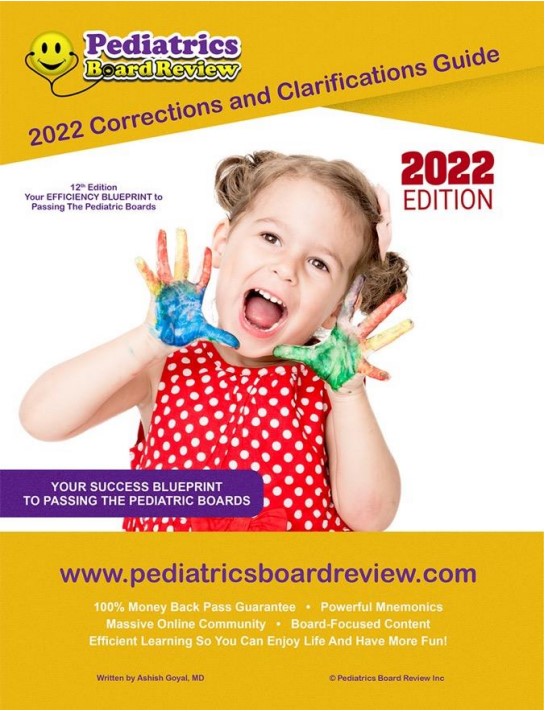Mastering Corrections And Clarifications: A Practical Approach

Table of Contents
Identifying the Need for Corrections and Clarifications
Effective communication relies on ensuring everyone is on the same page. However, misunderstandings are inevitable. The first step in mastering corrections and clarifications is recognizing when they're necessary.
Recognizing Misunderstandings
Identifying a communication breakdown requires keen observation and awareness. Look for the following signs:
- Inconsistencies in responses: Does the recipient's understanding match your intended message? Are their actions aligned with your instructions?
- Nonverbal cues of confusion: Observe body language. Frowning, furrowed brows, or a blank stare can indicate a lack of understanding.
- Repeated questions: If the same question is asked multiple times, it signals a need for clarification.
- Missed deadlines due to unclear instructions: Delays often stem from initial ambiguity in communication.
For example, imagine a project manager sending unclear instructions to their team. The resulting missed deadline and subsequent rework highlight the critical need for precise initial communication and timely corrections.
Assessing the Severity of the Issue
Not all errors require the same level of response. Determine the urgency and impact of the correction needed.
- Minor typo vs. significant factual error: A minor typo in an email requires a simple correction, while a significant factual error in a public report demands a more formal and comprehensive clarification.
- Internal communication vs. public statement: Internal corrections can often be handled informally, while public statements require careful consideration and a formal correction process.
Consider using a simple decision tree: Is the error factual? Does it affect a large audience? Is it time-sensitive? The answers will guide the appropriate response.
Crafting Effective Corrections and Clarifications
Once you've identified the need for a correction or clarification, crafting an effective response is key.
Choosing the Right Communication Channel
The method you choose significantly impacts the effectiveness of your correction.
- Email: Suitable for formal corrections, providing a written record.
- Phone call: Allows for immediate clarification and a more personal touch.
- In-person meeting: Best for sensitive issues requiring a face-to-face discussion.
Consider the sensitivity of the information, the urgency, and the recipient's preference when choosing a channel. For instance, a formal written correction is ideal for public-facing documents, while a quick phone call might suffice for an internal team clarification.
Writing Clear and Concise Corrections
The language you use is crucial.
- Use plain language, avoid jargon: Ensure everyone understands the correction.
- Be direct and upfront: Don't beat around the bush. State the correction clearly.
- Apologize sincerely if necessary: Acknowledge the error and show remorse.
- Provide a clear and accurate replacement: Ensure the corrected information is unambiguous.
For example, instead of saying "There seems to be a slight discrepancy in the figures," say, "The correct figure is $10,000, not $8,000. I apologize for the error."
Maintaining a Professional Tone
Even when correcting errors, maintaining a positive and respectful tone is essential.
- Avoid blaming others: Focus on solutions, not assigning fault.
- Focus on solutions: Explain how the issue is being addressed.
- Show empathy and understanding: Acknowledge the recipient's perspective.
For example, instead of saying "You made a mistake," try "Let's work together to clarify this point."
Preventing Future Corrections and Clarifications
Proactive measures can significantly reduce the need for corrections.
Improving Communication Processes
Implementing clear communication protocols is vital.
- Establish clear communication protocols: Define how information is shared and reviewed.
- Use consistent terminology: Avoid ambiguity by using standardized language.
- Implement a review process for important documents: Multiple sets of eyes catch more errors.
Utilize project management software to streamline workflows and improve task clarity.
Utilizing Feedback Mechanisms
Regular feedback helps identify and address potential communication issues.
- Regular check-ins: Allow for questions and clarification throughout projects.
- Surveys: Gather feedback on communication effectiveness.
- Feedback forms: Provide structured ways for recipients to offer input.
Consider implementing a 360-degree feedback system to obtain comprehensive perspectives on communication practices.
Conclusion
Mastering corrections and clarifications involves recognizing misunderstandings, crafting effective responses, and proactively preventing future errors. By implementing the strategies discussed – from choosing the right communication channel to proactively improving communication processes – you can significantly improve your communication effectiveness and avoid costly misunderstandings. Start implementing these strategies today and experience the benefits of clear and accurate communication! Become a master of corrections and clarifications and elevate your communication skills to a new level.

Featured Posts
-
 Decoding The Cnils Ai Guidelines A Practical Compliance Framework
Apr 30, 2025
Decoding The Cnils Ai Guidelines A Practical Compliance Framework
Apr 30, 2025 -
 The Ukraine War And The Global Rise In Military Spending
Apr 30, 2025
The Ukraine War And The Global Rise In Military Spending
Apr 30, 2025 -
 Skill Development Initiative Schneider Electric And Vignan Universitys Center Of Excellence
Apr 30, 2025
Skill Development Initiative Schneider Electric And Vignan Universitys Center Of Excellence
Apr 30, 2025 -
 Lack Of F 35 Parts Pentagon Audit Uncovers Inventory Deficiencies
Apr 30, 2025
Lack Of F 35 Parts Pentagon Audit Uncovers Inventory Deficiencies
Apr 30, 2025 -
 Why Middle Managers Are Essential For Company Success And Employee Well Being
Apr 30, 2025
Why Middle Managers Are Essential For Company Success And Employee Well Being
Apr 30, 2025
Latest Posts
-
 Onderzoek Naar Steekpartij In Van Mesdagkliniek Groningen Verdachte Malek F Aangehouden
May 01, 2025
Onderzoek Naar Steekpartij In Van Mesdagkliniek Groningen Verdachte Malek F Aangehouden
May 01, 2025 -
 Geweldsincident In Van Mesdagkliniek Malek F Verdacht Van Steekpartij
May 01, 2025
Geweldsincident In Van Mesdagkliniek Malek F Verdacht Van Steekpartij
May 01, 2025 -
 Patient Neerggestoken In Van Mesdagkliniek Groningen Details Over Aanval Door Malek F
May 01, 2025
Patient Neerggestoken In Van Mesdagkliniek Groningen Details Over Aanval Door Malek F
May 01, 2025 -
 Enhancing Shared Learning With Project Muse A Guide For Educators And Students
May 01, 2025
Enhancing Shared Learning With Project Muse A Guide For Educators And Students
May 01, 2025 -
 Project Muse Fostering Community Through Shared Digital Resources
May 01, 2025
Project Muse Fostering Community Through Shared Digital Resources
May 01, 2025
